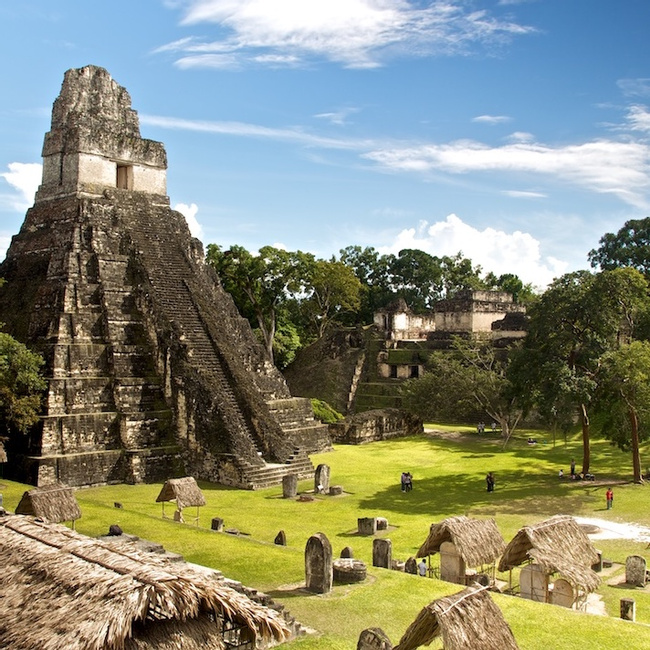- Travel Guides
Weather in Guatemala
Guatemala has a tropical climate, but the temperatures and rainfall can vary greatly within different regions. The country’s various weather patterns are mainly the result of altitude and mountains.

Guatemala’s lowland and coastal areas are typically the warmest parts of the country—they have an average annual temperature around 80°F (27°C), but during the months of March and April, the temperature can hang around 100°F (38°C). In the valleys between mountains, which range from 4,000–6,000 feet (1,200–1,800 m), the temperature is usually mild. Big cities like Quetzaltenango, Guatemala City, and Antigua are found here, and tend to enjoy comfortable temperatures around 60°F–70°F (16°C–21°C) all year. Atop mountains and volcanoes, the temperature can drop to below freezing.
Temperatures are generally cooler in Guatemala from November–February. If you want to travel during this time of year, be sure to bring warm clothing, especially if you’re planning on hiking mountains or volcanoes. March and April are the warmest months of the year.
Guatemala has a dry and rainy season. The dry season, or verano, lasts from November until the beginning of May. If you’re looking to spend a substantial portion of your time outdoors, this is the best time of year to go.
The rainy season, or invierno, usually lasts from May until November. During the rainy season, the mornings are usually clear, with daily showers occurring in the afternoon. The rain is heaviest during September and October.
In general, the Pacific Slope and Western Highlands are the wettest parts of Guatemala — they receive around 30–60 inches (76–150 cm) of rain a year. Parts of the Central Highlands tend to average around 20–30 inches (51–76 cm ) of rain each year. Petén sees about 80–150 inches (200–381 cm) of rain annually, much of which falls throughout the whole year. The Caribbean Coast tends to be the rainiest place in Guatemala.
Do note, however, that rainfall will vary greatly depending on what side of a mountain chain you’re on. Rainfall can also vary from year to year due to El Niño or La Niña. El Niño usually results in a longer dry season.
There are also often short periods during the rainy season when no rain falls. Known as canícula, these dry spells often last for a week or two in July or August. This is a great time to come in the summer, especially for families with children on summer vacation.
The weather typically does not inhibit getting to Guatemala, but it is important to stay up-to-date on the local weather during the rainy season. There can be issues accessing some of the older, more rural roads during inclement weather. Once you reach the country, you will not have to wait long to begin your adventure—most tourists need little more than a valid passport and proof of onward or return travel to enter the country.
It's more than just having a good time or visiting beautiful places (although that's absolutely a part of it!), it's about being part of a unique experience that stays with you.



